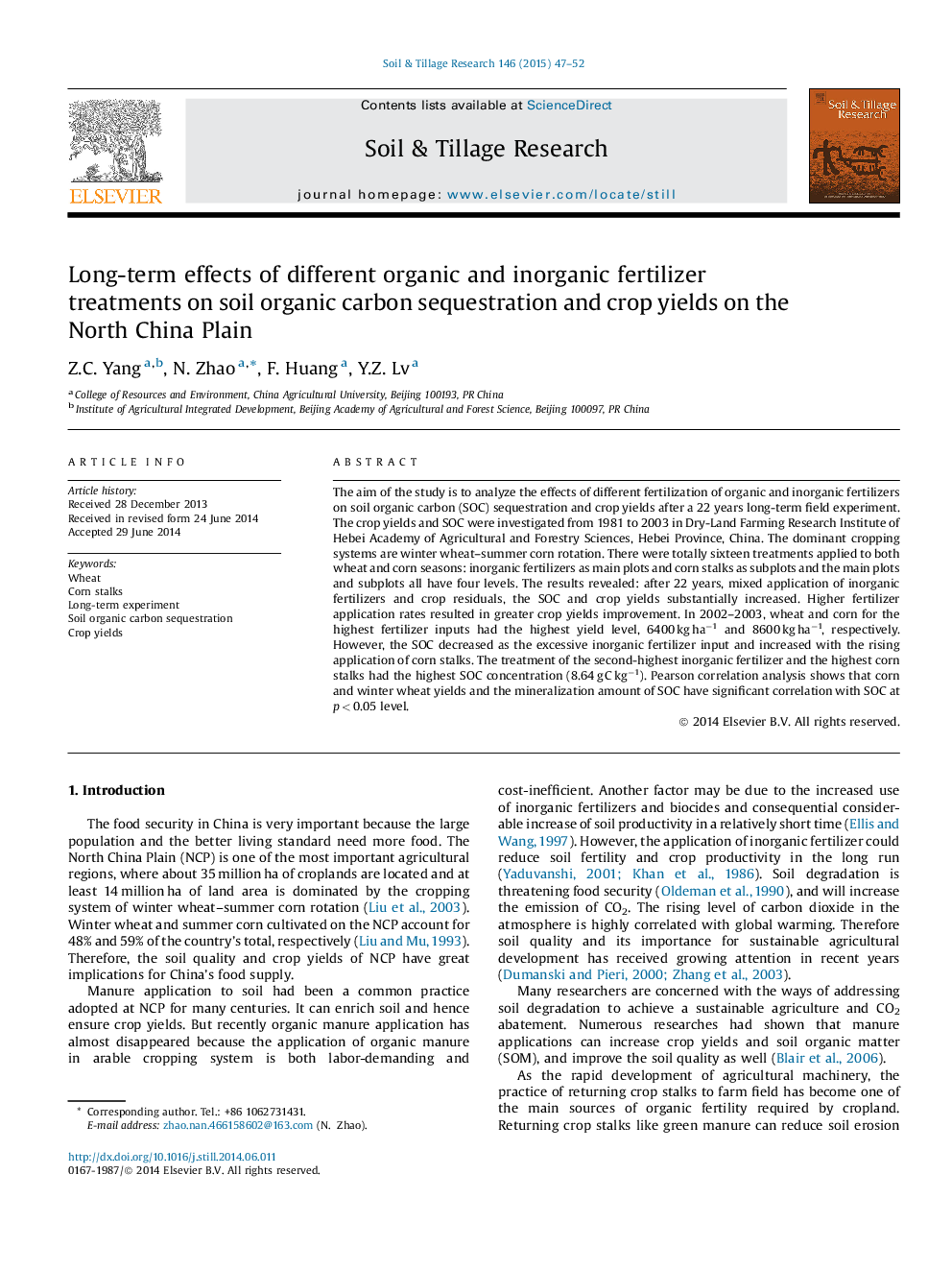| Article ID | Journal | Published Year | Pages | File Type |
|---|---|---|---|---|
| 305606 | Soil and Tillage Research | 2015 | 6 Pages |
•We examine the long term effects of inorganic and organic fertilizers on SOC sequestration and crop yields.•The mixed application of inorganic fertilizers and crop residuals can strongly increase the SOC and crop yields.•Corn and winter wheat yields and the mineralization amount of SOC have significant correlation with SOC.
The aim of the study is to analyze the effects of different fertilization of organic and inorganic fertilizers on soil organic carbon (SOC) sequestration and crop yields after a 22 years long-term field experiment. The crop yields and SOC were investigated from 1981 to 2003 in Dry-Land Farming Research Institute of Hebei Academy of Agricultural and Forestry Sciences, Hebei Province, China. The dominant cropping systems are winter wheat–summer corn rotation. There were totally sixteen treatments applied to both wheat and corn seasons: inorganic fertilizers as main plots and corn stalks as subplots and the main plots and subplots all have four levels. The results revealed: after 22 years, mixed application of inorganic fertilizers and crop residuals, the SOC and crop yields substantially increased. Higher fertilizer application rates resulted in greater crop yields improvement. In 2002–2003, wheat and corn for the highest fertilizer inputs had the highest yield level, 6400 kg ha−1 and 8600 kg ha−1, respectively. However, the SOC decreased as the excessive inorganic fertilizer input and increased with the rising application of corn stalks. The treatment of the second-highest inorganic fertilizer and the highest corn stalks had the highest SOC concentration (8.64 g C kg−1). Pearson correlation analysis shows that corn and winter wheat yields and the mineralization amount of SOC have significant correlation with SOC at p < 0.05 level.
